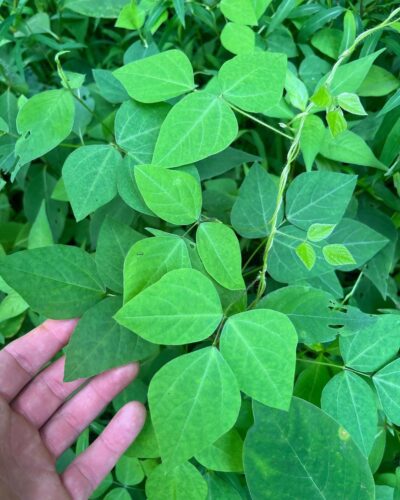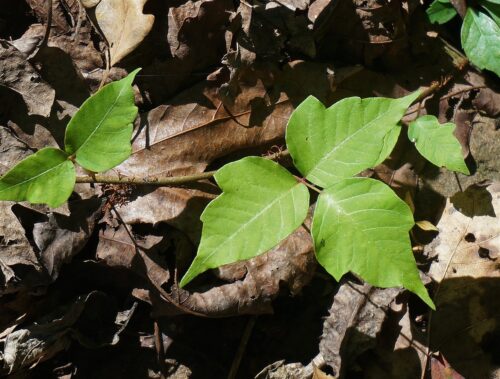American Hog Peanut vs. Poison Ivy: Differences and Similarities guide can be a reliable source that helps you differentiate between the two.
Read this American Hog Peanut vs. Poison Ivy: Differences and Similarities guide and learn how to draw a distinction between the two look alike plants.
Read: Plants that Resemble Poison Ivy with Three Leaves
What is an American Hog Peanut?

Also popular as hog peanut (Amphicarpaea bracteata), it is an annual herbaceous vine from the pea family (Fabaceae). The plant can grow up to 5 feet long; it climbs without tendrils and features three green leaflets that become yellow or gold in the fall. It also produces small blooms with pods of edible peanuts.
What is Poison Ivy?

Poison ivy (Toxicodendron radicans) can be seen in woods, edges, fields, and gardens. This woody vine also features three leaflets and clusters of small white-green fruits—all parts of the plant release sap or resin, which can lead to allergic reactions.
Read: Magnolia vs. Tulip Tree
American Hog Peanut vs. Poison Ivy: Differences
1. Difference in the Appearance
American Hog Peanut: This trailing or climbing vine features green stems carrying trifoliate foliage, which means the leaves are grouped in three. It displays pale pink or white blooms.
Poison Ivy: It thrives as a climbing vine or shrub and displays alternate trifoliate leaves (Compound foliage with three leaflets). The middle leaflet of poison ivy has a longer stalk compared to the two sides of the leaflets. The blooms are green, and fruits appear in loose dangling clusters.
2. Skin Irritation
American Hog Peanut: It is safe for humans, and there are no major risks shown in this plant.
Poison Ivy: This vine can cause a skin rash if it comes into contact with the skin. Just follow the rule ‘Leaves of Three, let them be’ to identify them and do not touch them to stay safe.
3. Benefits and Role in Environment
American Hog Peanut: It is used for nitrogen fixation. The decoction of roots is used for treating diarrhea.
Poison Ivy: However, it irritates human skin. Poison ivy provides food to animals and birds.
NOTE: These differences are for your help, but it will be great to stay away and avoid touching the plant you are not completely aware of.
Read: Sugar Kiss Melon vs. Cantaloupe
American Hog Peanut vs. Poison Ivy: Similarities
Leaves
Both poison ivy and American hog peanut produce foliage that is grouped in three.
Habitat
You can see them growing in different environments.
Regardless of these similarities, it is important to observe that American hog peanut is safe whereas poison ivy can cause skin rashes. Identifying the key differences is the key to staying safe.



